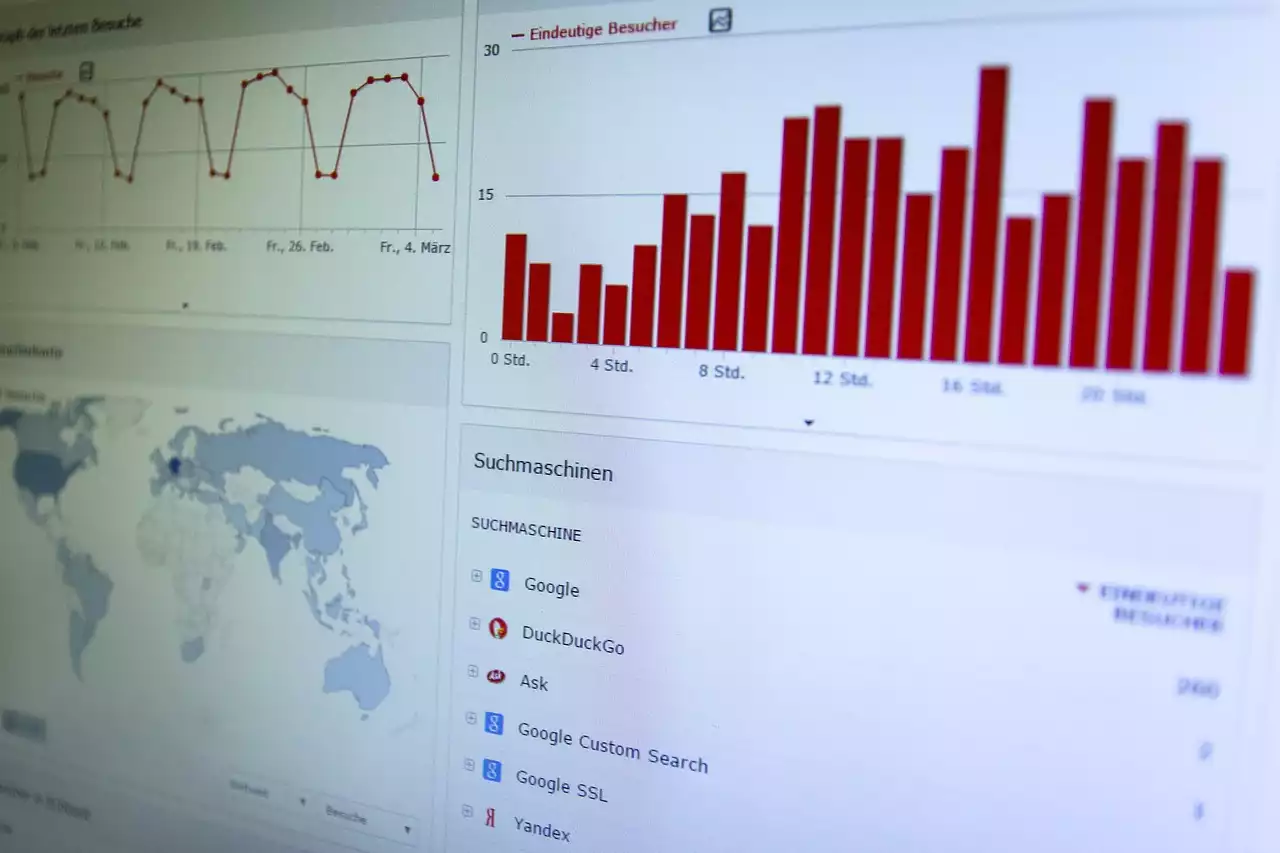What is A/B Testing?
A/B testing is a method of comparing two different versions of a webpage or marketing campaign to see which one performs better. The two versions, A and B, are shown to different groups of users, and their behavior is tracked and analyzed to determine which version is more effective in terms of engagement, conversion rates, or other key performance indicators (KPIs). The goal of A/B testing is to make data-driven decisions that can help you optimize your marketing campaigns and improve your overall conversion rates.
A/B testing can be used for a wide range of marketing activities, including website design, email marketing, social media advertising, and more. One of the main advantages of A/B testing is that it allows you to test different elements of your campaign in a controlled, scientific way, rather than relying on guesswork or intuition. This can help you identify which changes are likely to have the biggest impact on your conversion rates, and focus your efforts on the most effective strategies.
Another benefit of A/B testing is that it can help you understand your target audience better. By analyzing their behavior and preferences, you can gain valuable insights into what motivates them to engage with your brand and make a purchase. This can help you tailor your marketing messages and strategies to better resonate with your audience, leading to higher conversion rates and greater customer loyalty.
Benefits of A/B Testing for Conversion Rate Optimization
A/B testing can provide a range of benefits for conversion rate optimization, including:
Increased Conversion Rates
The primary goal of A/B testing is to improve conversion rates. By testing different versions of your campaign and identifying which one performs better, you can make data-driven decisions that can improve your overall conversion rates. This can lead to more revenue for your business and a better return on investment (ROI) for your marketing efforts.
Reduced Bounce Rates
Bounce rates refer to the percentage of visitors who leave your website without taking any action. A high bounce rate can indicate that your website is not engaging or relevant to your target audience. By using A/B testing to optimize your website design and content, you can reduce bounce rates and keep visitors on your site for longer.
Improved User Experience
A/B testing can also help you improve the user experience of your website or marketing campaign. By testing different layouts, designs, and content, you can identify which elements are most effective in engaging your audience and encouraging them to take action. This can lead to a more positive user experience and greater customer satisfaction.
Better Insights into Audience Behavior
A/B testing can provide valuable insights into your audience's behavior and preferences. By analyzing their interactions with different versions of your campaign, you can gain a better understanding of what motivates them to engage with your brand and make a purchase. This can help you tailor your marketing messages and strategies to better resonate with your audience, leading to higher conversion rates and greater customer loyalty.
A/B Testing Process
The A/B testing process typically involves the following steps:
Step 1: Identify the Problem
The first step in A/B testing is to identify the problem you want to solve. This could be a low conversion rate, high bounce rate, or any other issue that is impacting the performance of your marketing campaign.
Step 2: Define the Hypothesis
Once you have identified the problem, you need to define a hypothesis about what might be causing it. This could be anything from the design of your website to the wording of your call-to-action.
Step 3: Create Variations
Next, you need to create two or more variations of your campaign that test your hypothesis. These variations should be identical in every way except for the element you want to test. For example, you might create two versions of your website with different headlines.
Step 4: Test the Variations
Now it's time to test your variations. You can do this by using an A/B testing tool that will randomly show each version to different groups of users. Be sure to track and analyze the results to determine which version is more effective in terms of your KPIs.
Step 5: Implement the Winning Variation
Once you have identified the winning variation, you can implement it on your website or marketing campaign. Be sure to continue monitoring your KPIs to ensure that the new version is performing as expected. If not, you may need to go back and test additional variations to further optimize your campaign.
Factors to Consider When Conducting A/B Testing
To ensure that your A/B testing is effective, there are several factors you need to consider, including:
Sample Size
The sample size of your A/B test refers to the number of users who are included in each variation. It's important to ensure that your sample size is large enough to provide statistically significant results. Generally, a sample size of at least 100 users per variation is recommended.
Testing Duration
The duration of your A/B test is also important. You need to ensure that you run the test for long enough to collect sufficient data, but not so long that external factors (such as changes in your marketing strategy) start to skew the results. Generally, a testing duration of at least one week is recommended.
Test Frequency
You should also consider how frequently you want to conduct A/B tests. While it's important to optimize your campaigns continuously, testing too frequently can lead to "test fatigue" among your audience and impact the accuracy of your results. Generally, it's recommended to conduct A/B tests every few months, or whenever you make significant changes to your marketing strategy.
Test Goals
Finally, you need to define clear goals for your A/B test. This could be increasing conversion rates, reducing bounce rates, improving user engagement, or any other metric that is relevant to your marketing campaign. By defining clear goals, you can ensure that your testing is focused and effective.
Common A/B Testing Mistakes
While A/B testing can be a powerful tool for conversion rate optimization, there are several common mistakes that marketers often make. These include:
Testing Too Many Variables
One of the biggest mistakes marketers make is testing too many variables at once. This can make it difficult to determine which element is actually impacting your KPIs, and can lead to inconclusive results. Instead, focus on testing one element at a time to ensure that your results are clear and actionable.
Ignoring Statistical Significance
Another common mistake is ignoring statistical significance. It's important to ensure that your sample size is large enough to provide statistically significant results. Failing to do so can lead to inaccurate conclusions and ineffective optimization strategies.
Not Testing Continuously
A/B testing is not a one-time event. To ensure that your marketing campaigns are optimized continuously, you need to conduct A/B tests regularly and consistently. This will help you identify new opportunities for optimization and ensure that your campaigns are always performing at their best.
Using Poorly Designed Tests
Finally, it's important to ensure that your A/B tests are well-designed and implemented correctly. This includes ensuring that your variations are identical in every way except for the element you want to test, and that your testing tool is set up correctly to ensure accurate results.
Examples of Successful A/B Testing
To get a better sense of how A/B testing can be used to optimize marketing campaigns, let's take a look at some real-world examples of successful tests:
Slack
Slack, the popular workplace communication tool, conducted an A/B test to see whether changing the wording of their call-to-action (CTA) would impact sign-up rates. They tested two versions of their CTA: "Sign Up" and "Get Started". The "Get Started" version resulted in a 31% increase in sign-ups, demonstrating the power of simple wording changes in driving conversions.
HubSpot
HubSpot, the marketing automation platform, conducted an A/B test to see whether using an image of a person would improve the conversion rate of their landing page. They tested two versions of their page: one with an image of a person, and one without. The version with the image resulted in a 69% increase in conversions, demonstrating the impact of using human images to build trust and credibility with your audience.
Booking.com
Booking.com, the online travel agency, conducted an A/B test to see whether adding social proof to their hotel listings would increase bookings. They tested two versions of their page: one with a message that said "The last room at this price is available", and one without. The version with the social proof resulted in a 17% increase in bookings, demonstrating the impact of using scarcity and urgency to encourage action.
Tools for A/B Testing
There are several tools available to help you conduct A/B tests, including:
Google Optimize
Google Optimize is a free A/B testing tool that allows you to test different versions of your website and analyze the results. It integrates seamlessly with Google Analytics, making it easy to track and measure the impact of your tests.
Optimizely
Optimizely is a popular A/B testing platform that allows you to test website design, content, and more. It offers a range of features for advanced testing and personalization, making it a powerful tool for conversion rate optimization.
VWO
VWO is another popular A/B testing tool that offers a range of features for testing website design, content, and more. It also includes advanced targeting options, allowing you to test different versions of your campaign on specific audience segments.









